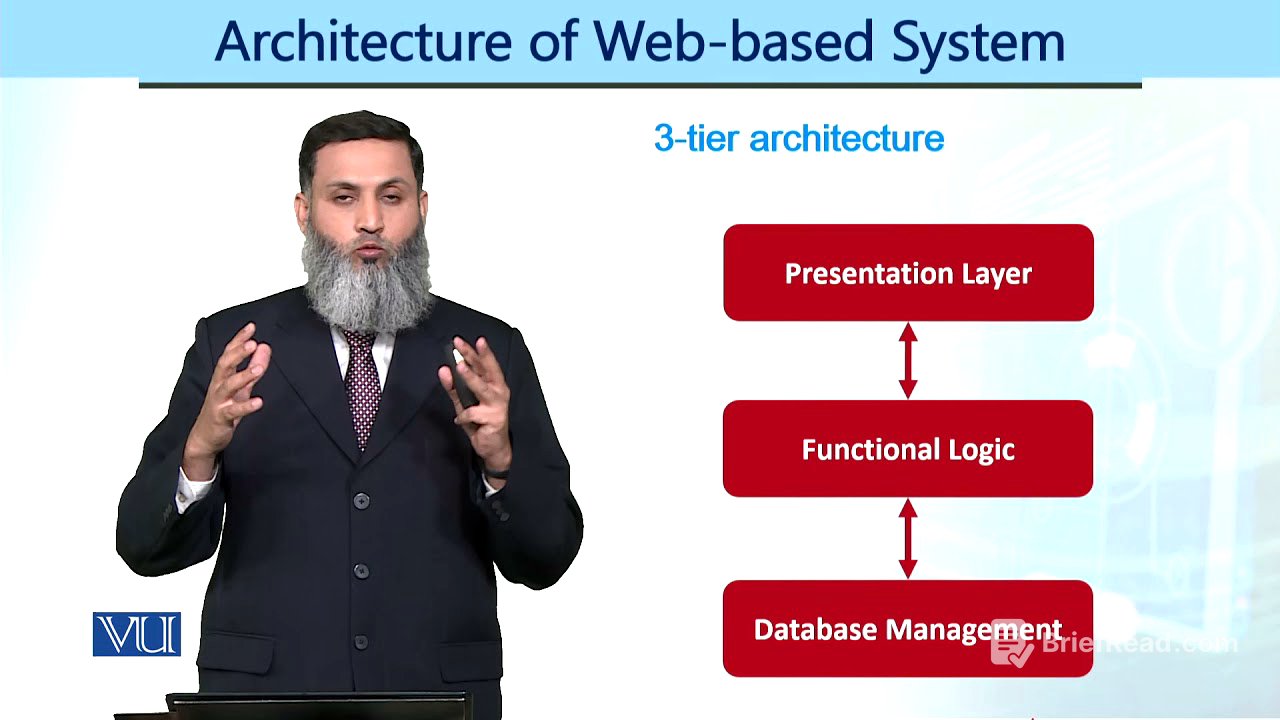TLDR;
This video discusses web architectures, focusing on two-tier and three-tier models. It explains how websites function with client-side and server-side interactions in a two-tier architecture. The video also introduces the three-tier architecture, which includes presentation, business logic, and data layers, emphasizing the benefits of separating these layers for easier maintenance and modification.
- Two-tier architecture involves client-side (browser) and server-side interactions.
- Three-tier architecture separates presentation, business logic, and data layers.
- Separating layers simplifies maintenance and allows for modifications without affecting other layers.
Two-Tier Architecture [0:00]
The two-tier architecture is fundamental to how websites operate. It involves the client-side, which is the user's browser, and the server-side, where the website's data is stored. When a user accesses a website, the browser sends a request to the server, which then responds with the content to be displayed. This basic setup is essential for all websites, forming the foundation upon which more complex architectures are built.
Three-Tier Architecture [0:33]
The three-tier architecture divides a web application into three distinct layers: presentation, business logic, and data. The presentation layer is responsible for displaying content to the user, handling the look and feel of the website. The business logic layer contains the functional logic that processes data and manages interactions. The data layer is responsible for storing and retrieving data, often involving databases.
Benefits of Layer Separation [0:54]
Separating the presentation, business logic, and data layers offers significant advantages in terms of maintenance and modification. When changes are needed in the business logic, they can be made without affecting the presentation layer. Similarly, updates to the data layer do not require modifications to the presentation or business logic layers. This separation simplifies the development process and reduces the risk of introducing errors when making changes.









